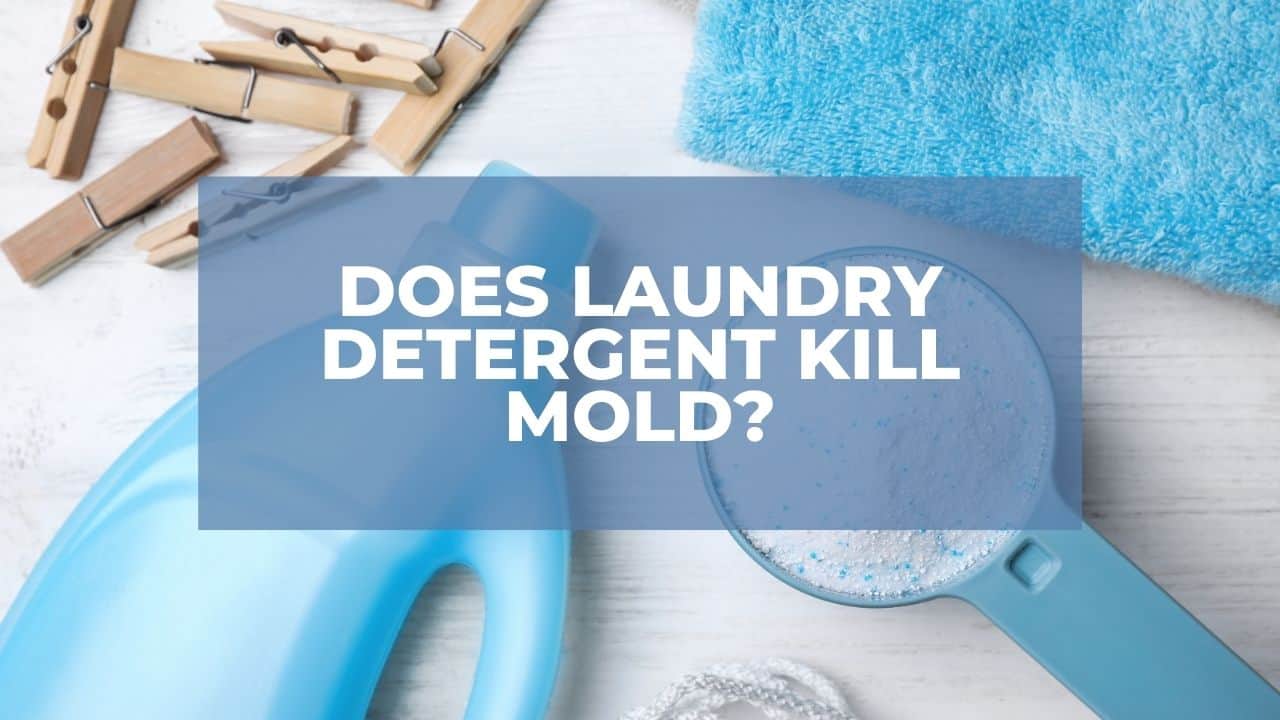Assuming that you know mold is a fair bet. You’ve probably seen them on walls, floors, furniture, and food, among other stuff. Perhaps, you’ve been a victim of their effects.
Otherwise, mold is a type of fungus that lives in damp conditions. It has various effects on the surfaces where it’s found, and it varies in color. It’s also important to mention that molds reproduce via spores, which are suspended in the air most of the time.

Today, we’ll answer the itching question; does laundry detergent kill mold?
Moreover, well talk about these fungi and their effects, besides a few other things, too. This article also clears all the doubts you have over how to effectively remove mold from your clothes and other surfaces, plus more.
Quick Navigation
How Mold Can Enter Your Clothes
Molds thrive best in damp conditions with not much ventilation. Their spores are usually floating freely in the air and are attracted to moist, fiber-rich surfaces like clothes, wood, etc. Keeping damp clothes in humid and less ventilated rooms will increase the chances of molds growing on them, especially within 24 hours.
Always ensure that you dry your clothes immediately after laundering or hand-washing them to avoid molds. Molds are bad masters, and their effects can go beyond your clothes into your body. Take a look at their effects in the next section.
Effects Of Mold On Clothes (And Your Body):
It Causes A Musty Odor
One of the most effective ways of detecting molds’ presence in your clothes is by their smell. A musty smell from your clothes is a likely indication of molds in them, especially if they’re damp.
You can’t put on a smelly cloth, so you have to get rid of the molds in time.
It Can Damage Your Clothes
Mold digests whatever it grows upon. If it stays longer on your clothes, it starts “eating” into the threads for survival. This is why you should get rid of the fungi before they multiply or stay there for a while.
With regard to how much they affect clothes, mold will be harsher to those made of natural fibers than the synthetic types.
Respiratory Snags
Aspergillus — a type of mold that mostly grows on shirts — is known to ignite respiratory problems. The mold is easy to inhale since its spores are often floating in the air.
When they get into your nose, lungs, and throat, you’re likely to cough, sneeze, and wheeze. Some are known to experience fever upon inhaling these types of mold.
The Aspergillus will get the better of more susceptible individuals — like those with weak immunity (e.g., children).
Sensitivity
Sensitivity to the skin is yet another effect of mold on clothes. It can cause skin allergies, rashes, peel-offs, and other adverse effects. People with further complications may suffer from other stuff like headaches, fever, and more from the sensitivity.
Can The Laundry Detergent Remove Mold?
The standard, ordinary laundry detergent alone cannot kill and remove mold from your clothes. There are unique kinds that can do the work.
However, laundry detergent can help you remove (and not destroy) mold from nonporous surfaces like glass and tiles, not clothes.
If you want to kill and remove mold from your clothes, wood, and other porous surfaces, you’ll need to purchase additional products that kill the mold before it’s washed off.
We’ll discuss the right products and methods that help you kill mold on any surfaces in the next section. Keep reading, pals.
How To Effectively Kill Mold:
Using Borax

Borax is a natural mold killer. If you want to use it for killing mold on your clothes, mix it with hot water (to dissolve) before adding the solution to your washing machine.
Kindly use the ratio indicated in the label to avoid further trouble. You can use the Borax detergent or Borax as a powder. If you’re using the Borax powder, ensure that you use it alongside a detergent.
Using Bleach

Bleach is an effective mold killer that also removes stains left behind by mold that had been there for long. It’s a dangerous chemical, too, that must be used with care.
Before using it, check to ensure that the underlying clothes have no “do not bleach” warning. Using bleach in excess can damage your clothes, so be sure that you comply with the usage instructions. Bleaching detergents also exist.
Using White Vinegar

White vinegar has been used to kill mold and remove the odor that accompanies it for several years. To use it, simply mix the recommended ratio (that differs with the concentration of the solution) with water and add to your washing machine before adding detergent and letting the machine run normally.
Other solutions to killing mold include using clear ammonia, tea tree oil, hydrogen peroxide, baking soda, heat, etc. Kindly use the one available around you while following all safety usage instructions.
How To Prevent Mold Growth:
You’re better safe than sorry, said the wise. Preventing mold from growing on your clothes and other areas will save you from the costs of all the processes above.
Do Not Store Wet Clothes
Mold will only grow on your clothes if you give them the conditions they need. Damp conditions are best for their growth. Always dry sweaty and wet clothes before they’re stored.
Manage Your Ventilation And Humidity
Poor ventilation — especially in places with high humidity — increases the risk of mold growth. You can demystify this by using a humidifier to reduce the humidity to below 55 percent or improve your ventilation system.
Do Regular Checks In Your Home
When mold is already in your home, there’s a risk of it spreading faster. Doing regular checks will help you identify and eradicate the ones that already exist to prevent their spread.
The Bottom Line
Does laundry detergent kill mold? The answer is no. The regular laundry detergent has no chemicals that can kill mold. However, it can be used alongside bleach, Borax, and other products to achieve this effectiveness. This article has highlighted various ways to kill and prevent mold using special detergents and other solutions.


